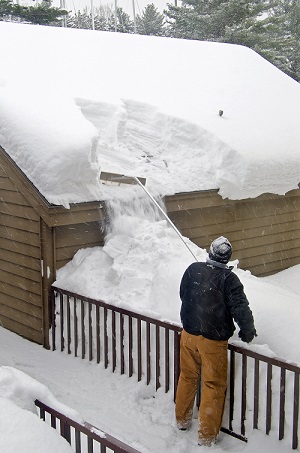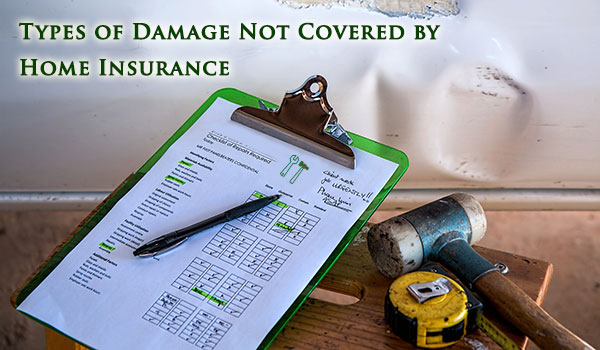Tips for Removing Snow from your Roof
We are more than halfway through the winter but in most areas of the U.S., there is still the possibility of experiencing significant snowfall. Much of the eastern region of the U.S. among other areas has already dealt with heavy snow this year and the damage that snow can cause to your home, especially the roof, can be very significant. The roof is perhaps the most vulnerable part of the home during the winter because ice and snow accumulate throughout the season and can led to issues such as ice dams, structural damage, and even cave-ins. The following snow removal tips will help you effectively remove snow from your roof to prevent significant structural damage.
-
- When the snow on your roof gets about 6 inches deep, it is time for snow removal.
- Do not remove all of the snow, you should leave 2 inches of snow on the roof to protect it from damage.

Man uses roof rake to remove snow from the roof.
- For one-story homes, it is best to use a snow rake or a roof rake with an extendable handle and clear the snow while standing on the ground. If your home is two-stories or more, you can use the same roof rake to remove snow from the overhangs.
- Be aware of powerlines overhead as you use your rake to remove snow from the roof.
- If a roof rake is not adequate enough for snow removal, your roof must be shoveled. Shoveling snow from the roof is a dangerous job and is better left to a professional such as a licensed roofing contractor.
- If you must shovel the snow from the roof yourself, make sure you take every safety precaution. The ladder must be placed somewhere where it can remain stable while in use and it is wise to use a safety harness to prevent falls. If your roof is sloped, you should begin shoveling at the ridge and work your way to the eaves.
- Do not use mechanical snow removal equipment such as snow blowers on your roof because they could cause more damage.
- Do not use salt on your roof to melt snow and ice. Salt can cause damage and discoloration to your roof.
- Make sure to put the snow that you remove from the roof in a safe area away from driveways, walkways, entrances to your home, or downspouts.
If another snow storm this winter results in a large amount of snow accumulated on your roof, you can remove the snow with these tips. Letting the snow build up on your roof can cause structural damage and cave-ins from the weight, as well as ice dams that can leadLead is a heavy metal that can be toxic to humans, especiall... More to extensive water damage so make sure you remove the snow from your roof before it piles too high. If your home or roof does sustain significant damage from heavy snow or a winter storm, you must call a professional for storm damage restoration. They have the training and equipment to repairRepair is the act of fixing or restoring damaged property, m... More storm damage during the winter season and get your home back to its previous condition.












